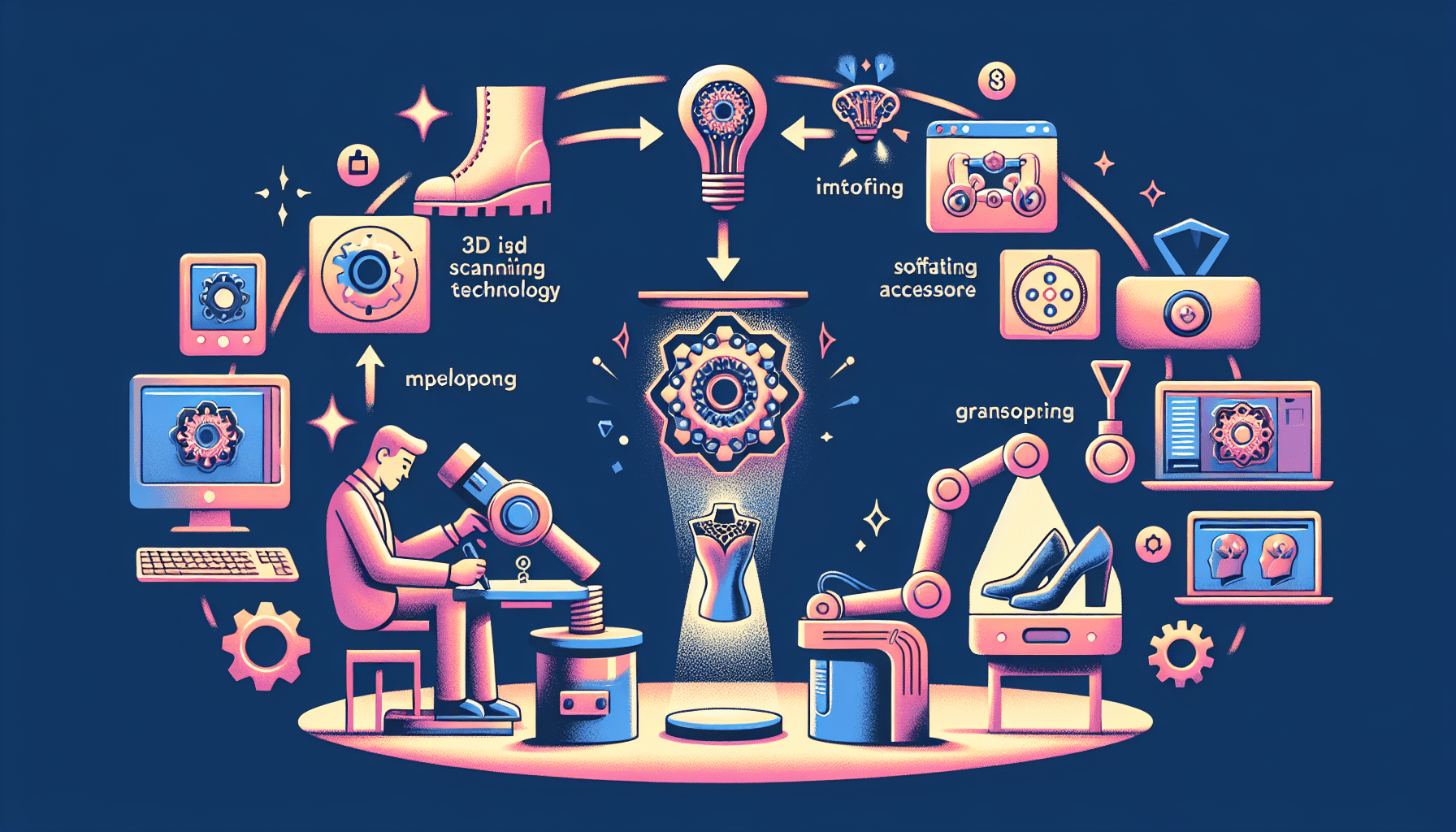Official Creality Ender 3 3D Printer Fully Open Source with Resume Printing Function DIY Printers Build Volulme 8.66x8.66x9.84 inch
$179.00 (as of June 21, 2025 23:57 GMT +00:00 - More infoProduct prices and availability are accurate as of the date/time indicated and are subject to change. Any price and availability information displayed on [relevant Amazon Site(s), as applicable] at the time of purchase will apply to the purchase of this product.)In the quest for stronger and more efficient 3D prints, researchers have been exploring various methods to improve layer adhesion and overall print strength. Stefan from CNC Kitchen takes on this challenge and uncovers an interesting technique called “staggering layers.” By arranging the layers in a specific manner, Stefan demonstrates how this approach can lead to better adhesion and increased surface area for connections. Watch the video to learn more about this fascinating method and discover how you can enhance the strength of your 3D prints.
Benefits of Layer Staggering
Layer staggering is a technique in 3D printing that involves changing the height of each layer in a printed object. This method offers several benefits that can greatly improve the strength and quality of your prints.

Improved Layer Adhesion
One of the main advantages of layer staggering is improved layer adhesion. By changing the layer height in a staggered pattern, there is a greater surface area for each layer to bond with the layer below it. This increased contact area results in stronger and more reliable adhesion between layers, reducing the risk of delamination or separation.
Stronger Print Results
Layer staggering also leads to stronger print results overall. The increased layer adhesion mentioned earlier contributes to the overall strength of the printed object. With better layer bonding, the object becomes more durable and better able to withstand stress and pressure without breaking or deforming.
Increased Surface Area for Connection
In addition to improved layer adhesion and strength, layer staggering also increases the surface area available for connection between layers. This means that each layer has more contact points with the adjacent layers, resulting in a more secure and reliable bond. The increased surface area for connection further enhances the overall structural integrity of the printed object.
Methods of Layer Staggering
There are several methods that can be used to achieve layer staggering in 3D printing. These methods involve altering the height of each layer in a specific pattern or manner to create the desired staggered effect.
Alternating Layer Heights
One method of layer staggering is to alternate the height of each layer. For example, instead of printing each layer at a uniform height, you can print one layer slightly thicker or thinner than the previous one. This alternating pattern helps distribute the stress and forces acting on the printed object, resulting in a more balanced and robust structure.
Random Layer Heights
Another approach to layer staggering is to introduce random variations in layer heights. By randomly changing the layer height for each printed layer, you can create a more organic and natural-looking object. This method of layer staggering can be particularly useful for creating artistic or design objects that require a unique and visually interesting appearance.
Gradual Layer Height Change
A third method of layer staggering involves making gradual changes in layer height throughout the printing process. Instead of abrupt changes between layers, the height transition is more gradual, resulting in a smoother and more continuous flow between layers. This method helps to minimize potential weak points or areas of stress concentration in the printed object.
Implementing Layer Staggering
To implement layer staggering in your 3D prints, you need to consider factors such as software compatibility, adjusting layer height settings, and testing and tweaking the print settings to achieve the desired results.
Choosing the Right Software
The first step in implementing layer staggering is to choose the right software that supports this feature. Not all slicers or 3D printing software may have built-in tools or settings for layer staggering. Therefore, it is important to select software that provides the necessary capabilities to implement this technique effectively.
Adjusting Layer Height Settings
Once you have the appropriate software, you can start adjusting the layer height settings to achieve layer staggering. Depending on the software, you may have options to manually set the layer heights or utilize specific presets for staggered layer patterns. Experiment with different settings to find the optimal combination for your specific print.
Testing and Tweaking
After adjusting the layer height settings, it is essential to test and tweak the print to ensure the desired results. This may involve printing small test objects or prototypes to evaluate the layer adhesion, print strength, and overall quality. By analyzing the test results, you can make further adjustments to the layer staggering settings until you achieve the desired outcome.
Tips for Successful Layer Staggering
While implementing layer staggering, there are some essential tips to keep in mind to ensure successful and effective results.
Start with Small Changes
When starting with layer staggering, it is advisable to begin with small changes in layer heights. Incremental adjustments allow you to observe and understand the impact of each change on the print quality and strength. Starting with small changes also helps avoid any drastic modifications that may negatively affect the print.
Consider the Object’s Purpose
Before implementing layer staggering, consider the purpose of the printed object. Different objects may require different layer staggering patterns or techniques to achieve optimum strength and functionality. For example, functional prototypes may benefit from alternating layer heights, while artistic projects may require random layer heights for an aesthetically pleasing result.
Experiment with Different Staggering Patterns
Don’t be afraid to experiment with different layer staggering patterns. There is no one-size-fits-all approach, and what works well for one print may not be ideal for another. Try out different staggering patterns, such as alternating, random, or gradual changes, to find the pattern that best suits your specific printing needs.
Testing the Strength of Staggered Prints
To assess the strength and durability of staggered prints, it is essential to perform tests and analyze the results. This helps ensure that the layer staggering technique is effectively enhancing the overall strength of the printed object.
Comparison with Non-Staggered Prints
A common test to evaluate the strength of staggered prints is to compare them with non-staggered prints. Print identical objects using both layer staggering and non-staggering techniques and subject them to similar stress or load tests. By comparing the results, you can determine the extent of improvement achieved through layer staggering.
Applying Stress Tests
Another effective method for testing the strength of staggered prints is to subject them to specific stress tests. These tests simulate real-world conditions or potential forces that the printed object may experience during its intended use. By applying various stress tests, such as bending, compression, or torsion, you can assess the structural integrity and strength of the staggered prints.
Analyzing Results
After conducting the tests, it is crucial to analyze the results obtained. Look for signs of failure or deformation, such as cracking, warping, or delamination. Compare the performance of staggered prints to non-staggered prints to determine the effectiveness of the layer staggering technique in improving print strength.
Choosing the Right Filament for Staggered Prints
When considering layer staggering, it is important to choose the right filament material that complements the desired print strength and layer adhesion properties.
Strength and Flexibility Considerations
Different filaments have varying strengths and flexibility characteristics. Depending on the application and required functionality of the printed object, you may need to choose filaments that offer high strength and rigidity or flexibility and resilience. Consider the specific requirements of your print and select a filament that aligns with those needs.

Optimal Layer Adhesion Properties
Layer adhesion is crucial for the overall strength and quality of staggered prints. Some filament materials have better layer adhesion properties than others. Look for filaments that offer excellent interlayer bonding and adhesion, as this will further enhance the effectiveness of the layer staggering technique.
Common Challenges and How to Overcome Them
While implementing layer staggering, there are some common challenges that you may encounter. Understanding these challenges and learning how to overcome them can help you achieve successful staggered prints.
Warped Prints
Warped prints can occur when there is uneven cooling or inadequate bed adhesion. Layer staggering, especially with significant variations in layer heights, can increase the risk of warping. To overcome this challenge, ensure proper bed leveling, use adhesive or a heated bed if necessary, and consider adjusting cooling settings to achieve uniform cooling throughout the print.
Inconsistent Layer Adhesion
Inconsistent layer adhesion can lead to weak points or delamination in staggered prints. To overcome this challenge, ensure that the nozzle temperature, print speed, and layer height settings are properly calibrated. Additionally, using filaments with good layer adhesion properties can help mitigate this issue.
Print Quality Issues
Layer staggering, if not implemented correctly, can result in print quality issues such as stringing, blobs, or gaps between layers. To overcome these challenges, optimize your printer’s retraction settings, adjust print speed, and consider post-processing techniques such as sanding or smoothing to improve the overall print quality.
Combining Staggered Layers with Other Strengthening Techniques
Layer staggering can be combined with other strengthening techniques to further enhance the strength and durability of printed objects.
Infill Patterns and Density
By adjusting the infill patterns and density, you can create a more solid and robust internal structure for the printed object. This, combined with layer staggering, helps distribute forces more effectively and improves overall print strength.
Post-Processing Techniques
Post-processing techniques such as sanding, smoothing, or reinforcing with filler materials can be employed to strengthen staggered prints further. These techniques help remove imperfections, strengthen weak areas, and improve the overall surface finish and structural integrity of the printed object.
Material Reinforcements
In addition to layer staggering, you can incorporate material reinforcements, such as inserts, screws, or inserts of stronger materials, to enhance the strength of specific areas or joints in the printed object. This combination of layer staggering and material reinforcements creates a more robust and reliable structure.
Applications and Use Cases for Staggered Prints
Staggered prints have a wide range of applications and use cases, showcasing the versatility and benefits of this technique in various industries and fields.
Functional Prototypes
Staggered prints are particularly useful for creating functional prototypes that require high strength and durability. Industries such as automotive, aerospace, or robotics can benefit from the improved layer adhesion and overall strength provided by layer staggering.
Mechanical Parts
Staggered prints are also well-suited for producing mechanical parts that require reliable and robust performance. By incorporating layer staggering, these parts can withstand the stress, load, and forces typically encountered in mechanical systems, leading to improved functionality and longevity.
Art and Design Projects
Staggered prints offer unique opportunities for artists and designers to create visually striking and aesthetically pleasing objects. By utilizing random or gradual layer height changes, artists can achieve intricate and organic designs that are not possible with uniform layering.
Future Developments in Layer Staggering
The field of layer staggering in 3D printing is continuously evolving, and several exciting future developments are expected to enhance this technique further.
Advanced Algorithms and Software
The development of advanced algorithms and software dedicated to layer staggering is expected to simplify the implementation process. These tools will allow users to automate and optimize the layer staggering process, making it more accessible to a wider range of users.
Automated Layer Staggering
As software and hardware capabilities improve, the potential for automated layer staggering increases. By incorporating sensors, artificial intelligence, and machine learning, 3D printers may be able to dynamically adjust layer heights during the printing process, optimizing layer staggering based on the specific requirements of each print.
Integration with Multi-Material Printing
Layer staggering can be combined with multi-material printing to create even more versatile and robust printed objects. By using different materials for each staggered layer, it is possible to achieve enhanced functionality, strength, and visual appeal in complex prints.
In conclusion, layer staggering offers significant benefits in 3D printing, such as improved layer adhesion, stronger print results, and increased surface area for connection. By utilizing different layer staggering methods, implementing the technique effectively, and considering filament selection, 3D printing enthusiasts can create prints with enhanced strength and durability. While there may be challenges in implementing layer staggering, these can be overcome through proper calibration and adjustment of print settings. Additionally, combining layer staggering with other strengthening techniques further enhances the structural integrity of printed objects. The applications and potential future developments in layer staggering highlight its importance and potential in the field of 3D printing.










